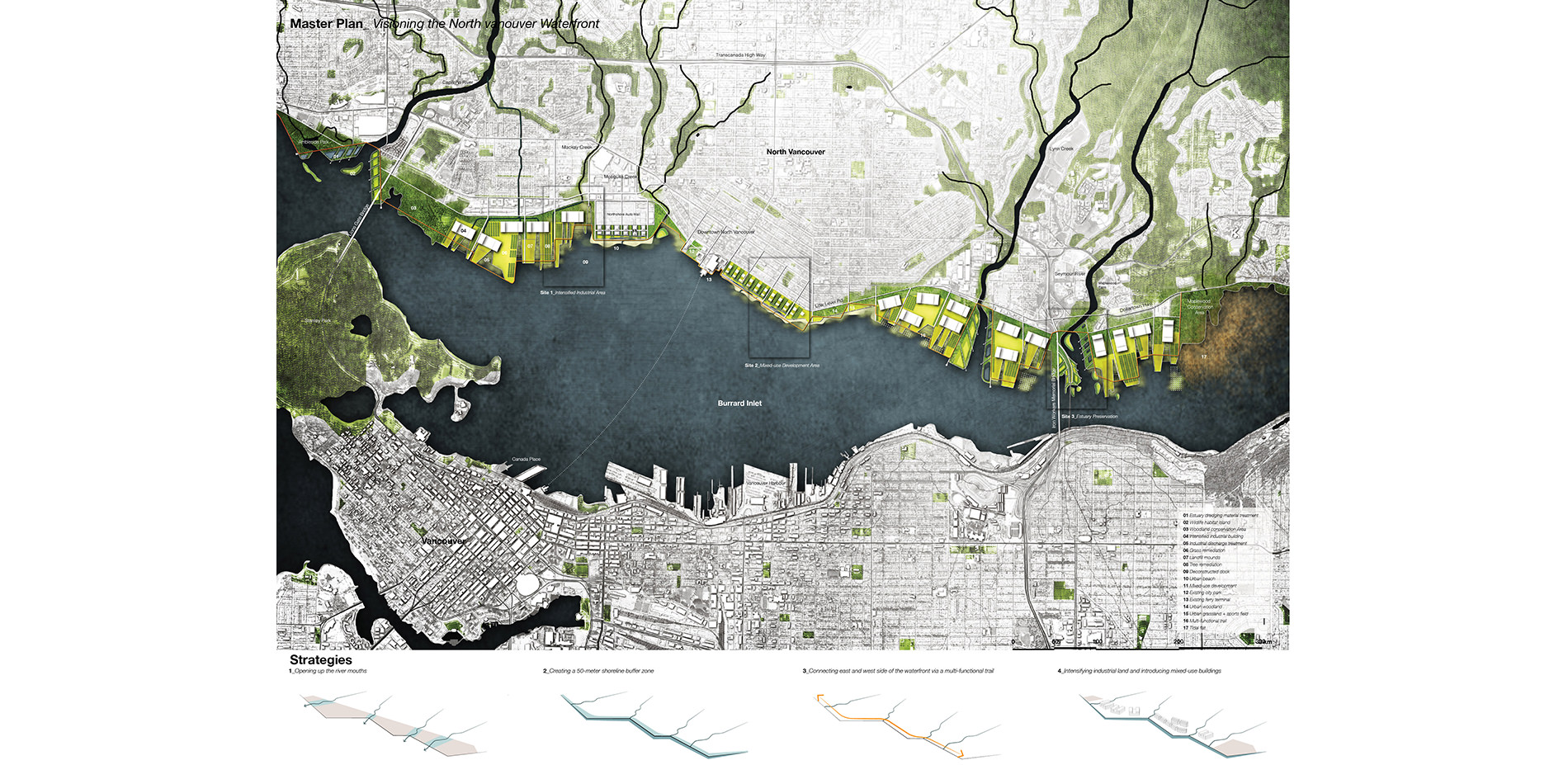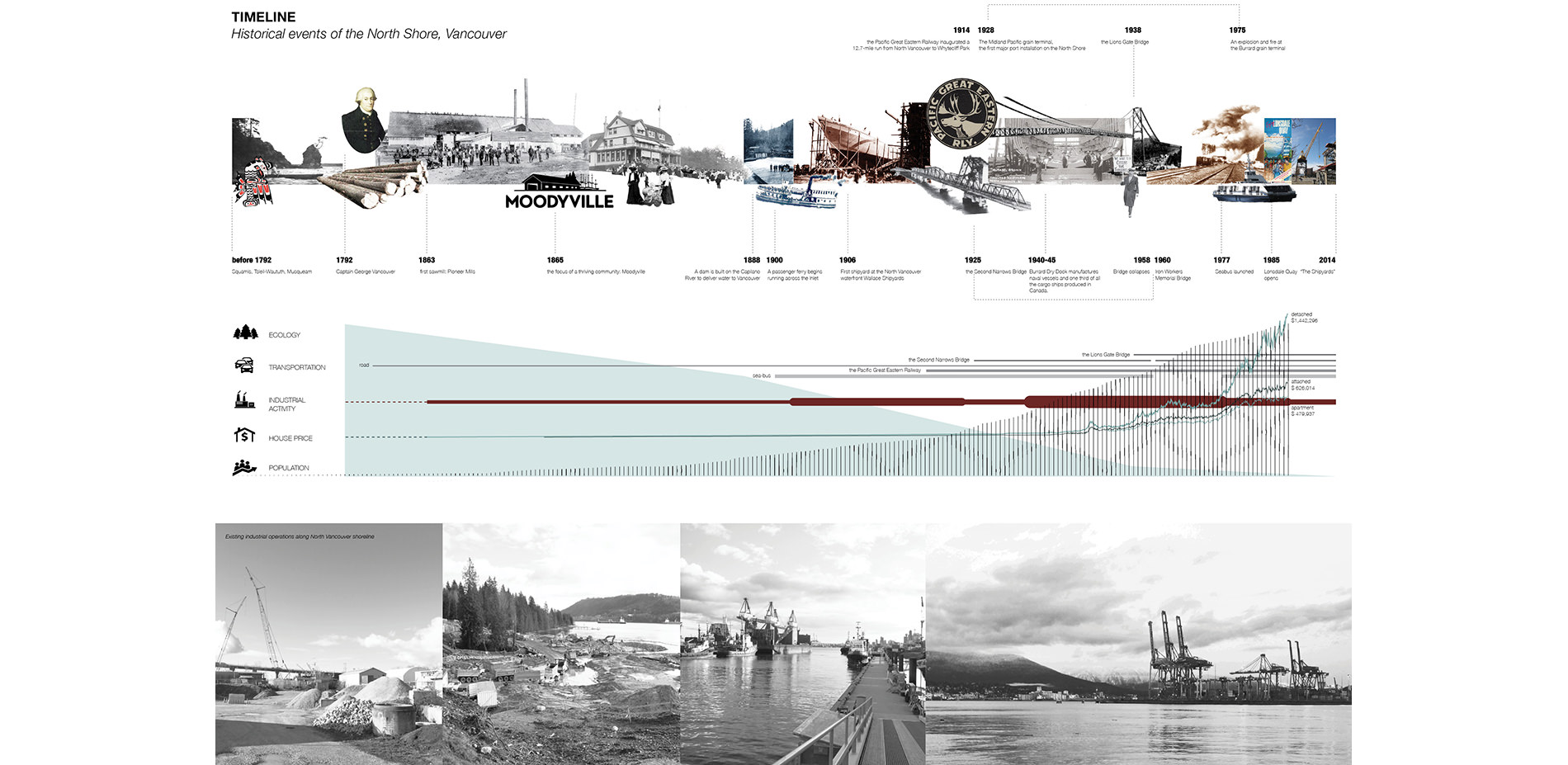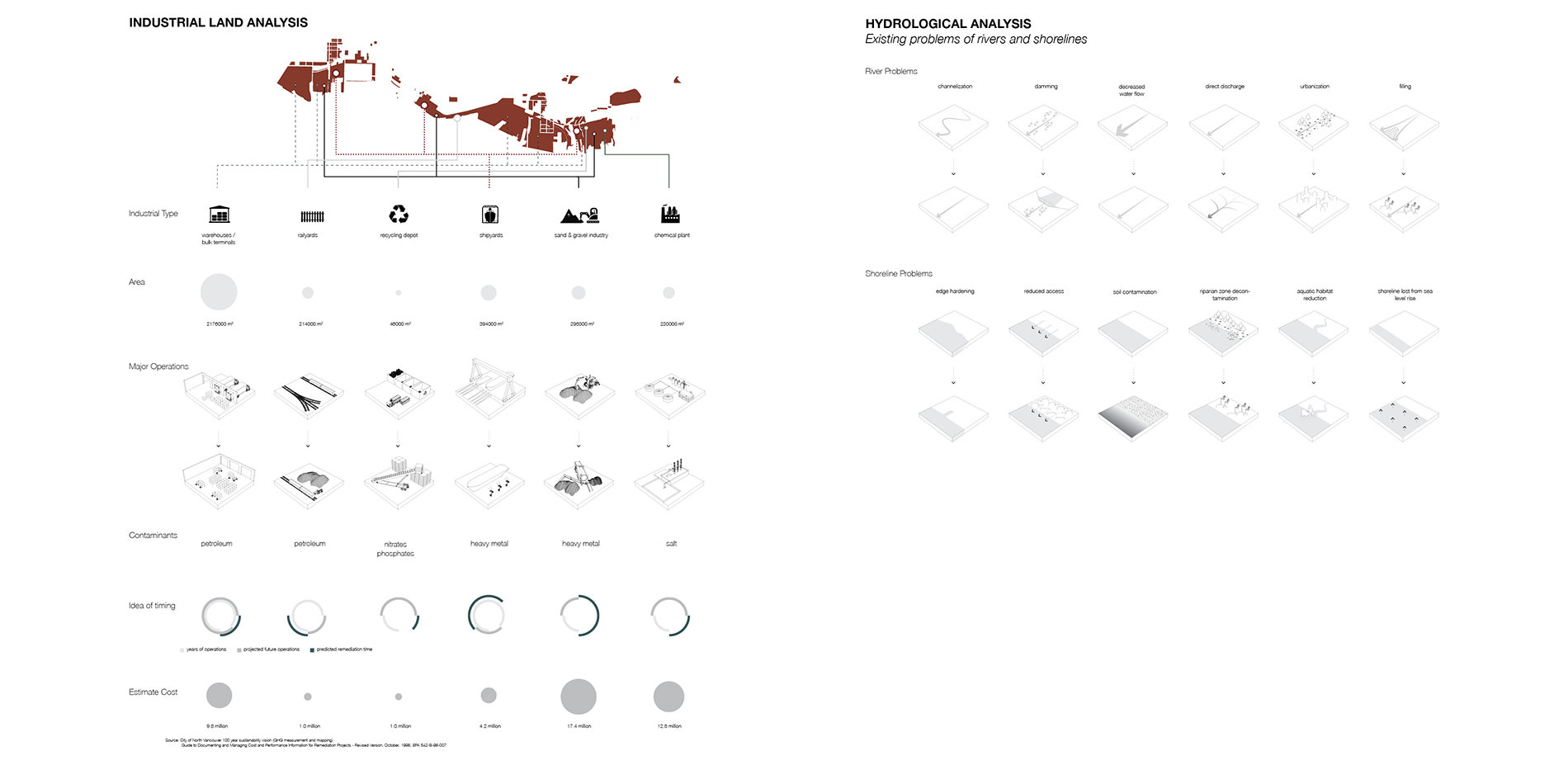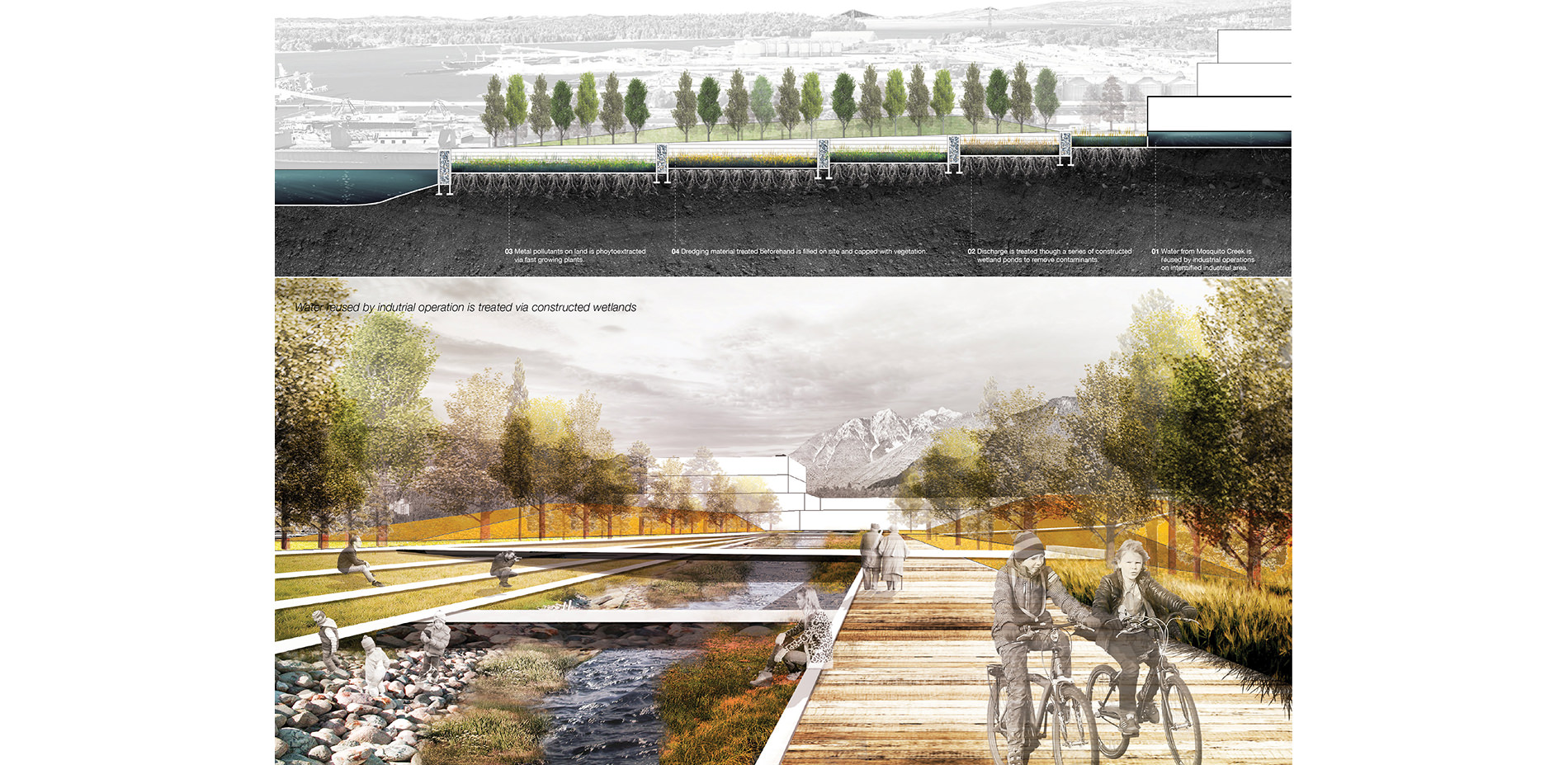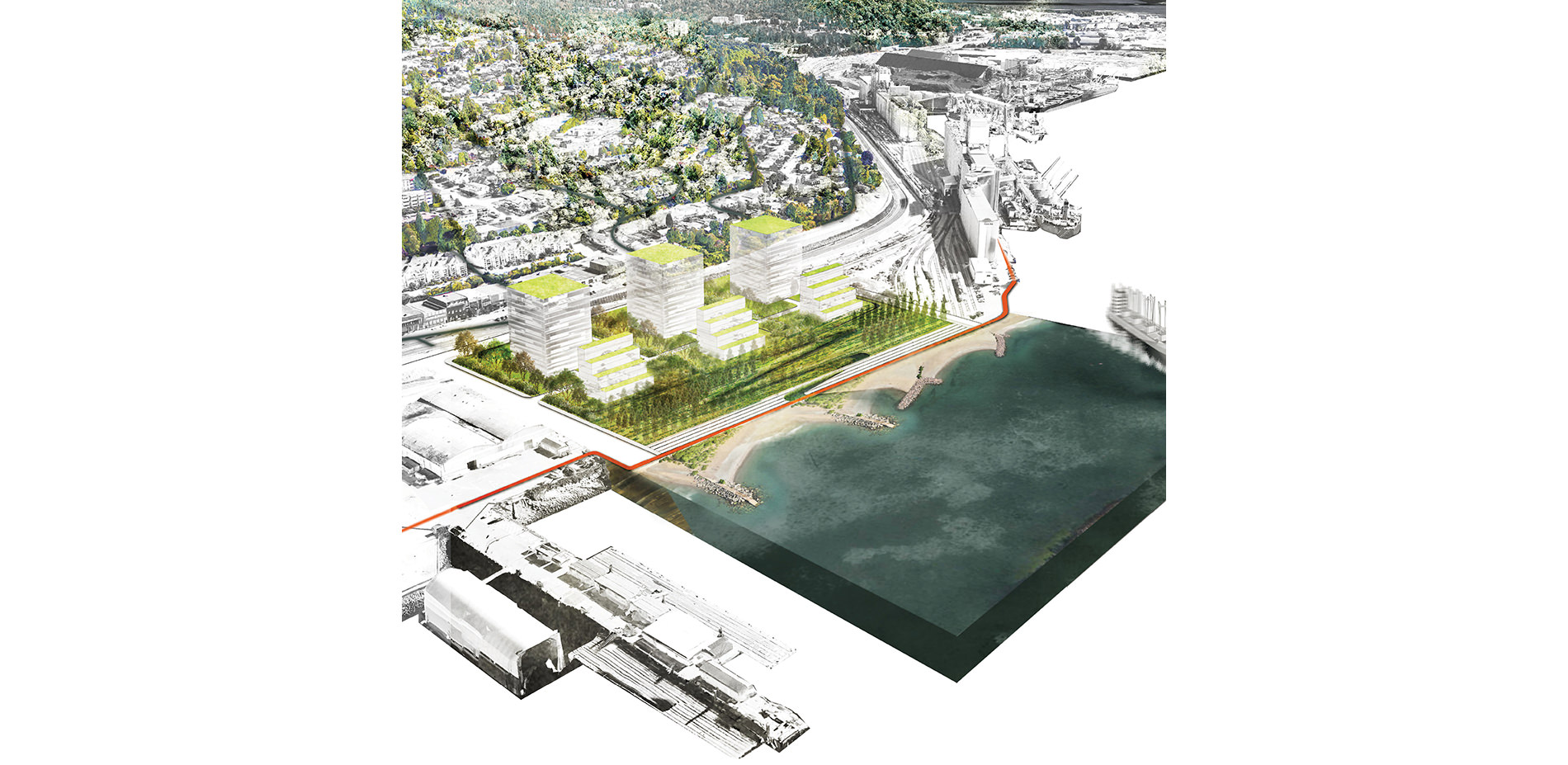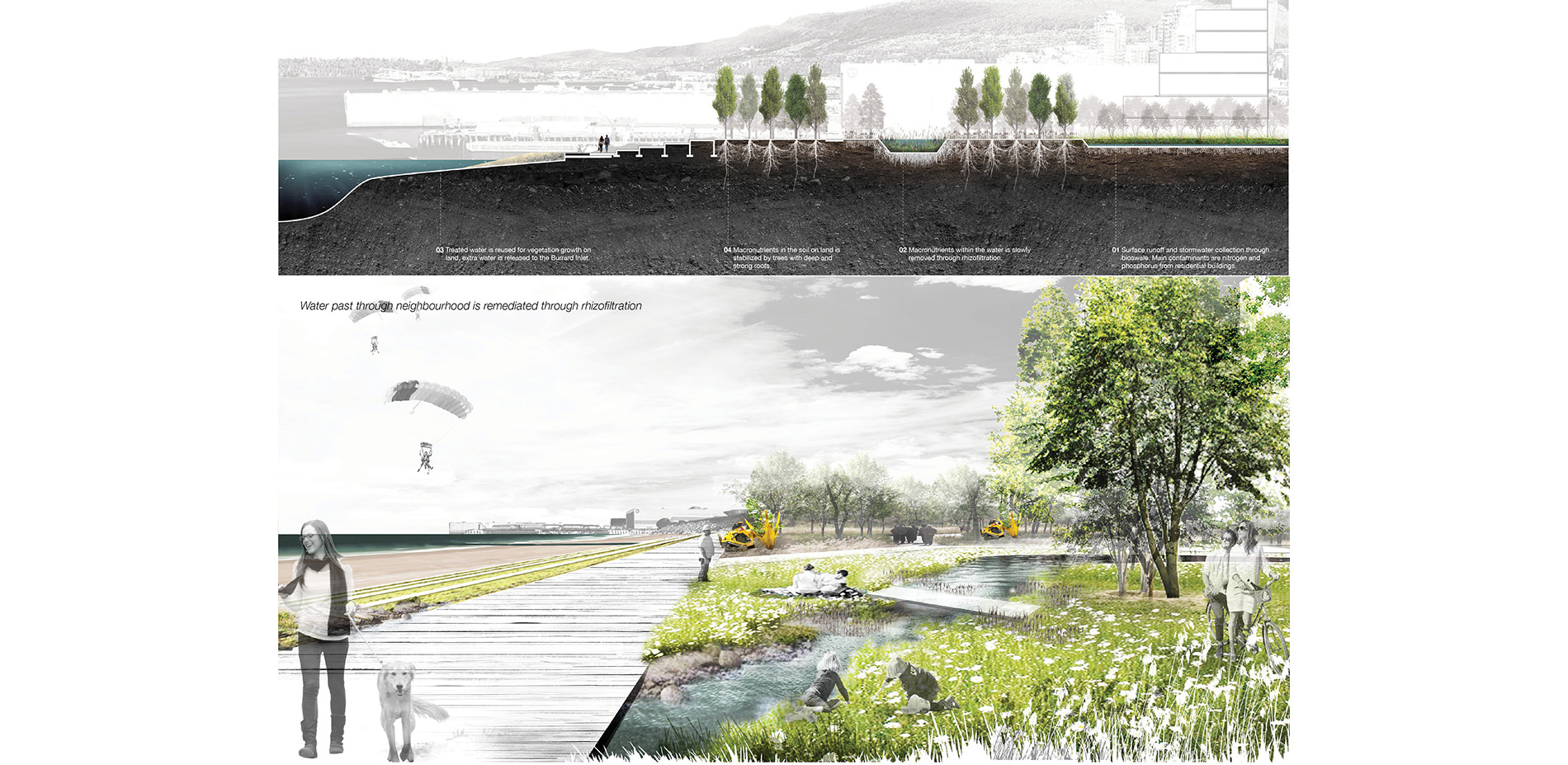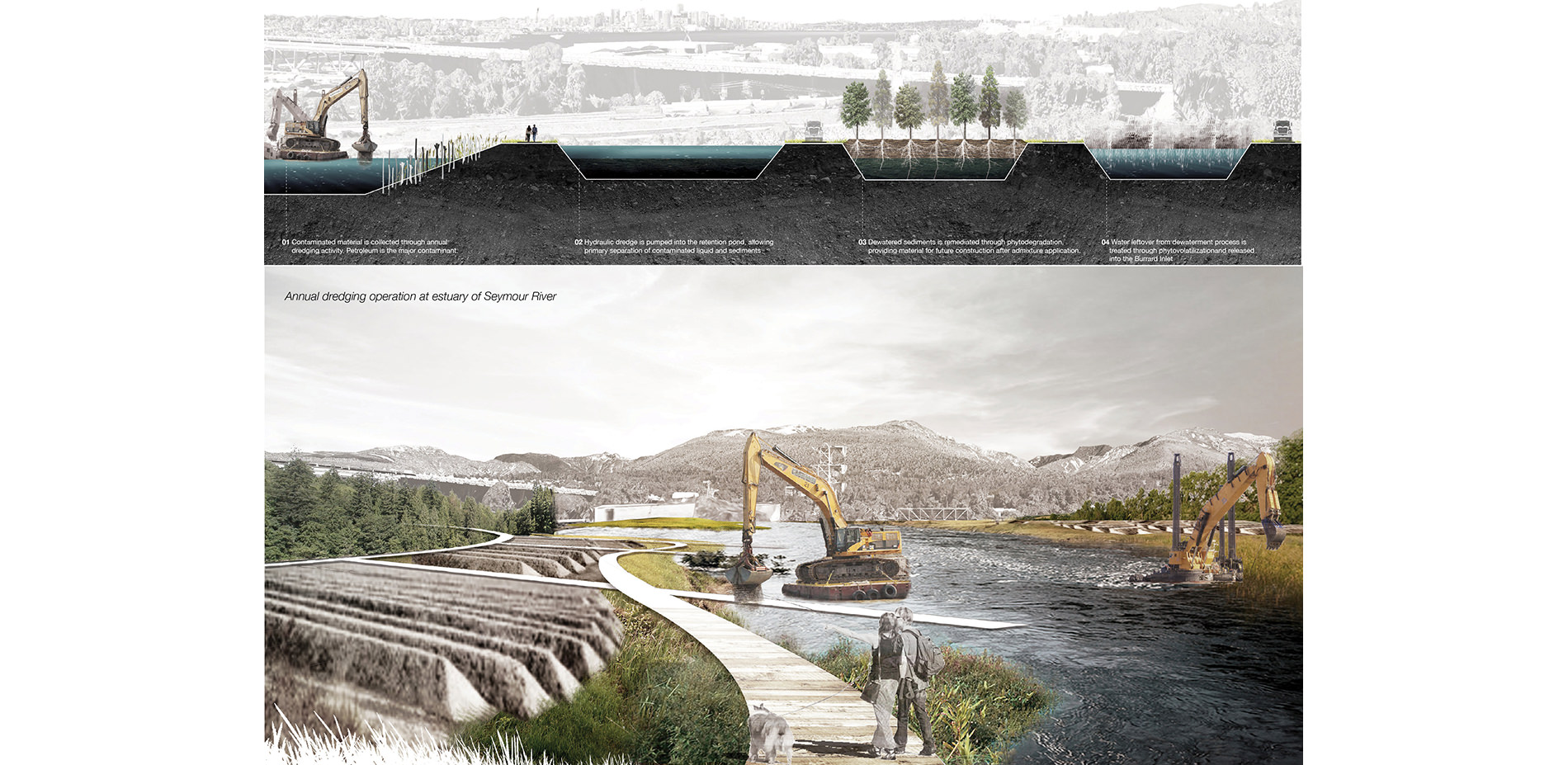PROJECT NARRATIVE
Estuaries and shorelines are among the most important features on Pacific coast. They provide habitat for fish, waterfowls and migrated birds, and attracts human settlements and use as well. During the past 100 years, industrial activities has taken these ecologically valuable land for all kinds of manufacturing and operations. Most of the heavy industrial operations degrade subgrade soil and ground water quality. As a result, the environmental quality of industrial waterfronts are often heavily impacted. They require extensive remediation before redevelopment can take place.
This project seeks to develop a phased remediation strategy that combines existing industrial land-use with future urban development, revealing the social and ecological potential of the site. Shoreline dynamics and ecology; industrial operation and evolution; historical context and economic development; and in-situ site remediation will drive the creation of a multi-functional green belt that supports resilient shoreline ecologies, urban redevelopment and a variety of social spaces.
The site of exploration is a 12-kilometre long industrial belt currently in operation along the North Shore of Burrard Inlet in Metro Vancouver, BC. It is surrounded by the huge rocky mountain to the north, three rivers - the Capilano river, Lynn creek and Seymour river run all the way down to Vancouver harbour. They provide the drinking water for the whole Metro Vancouver. Intense housing pressure and limited space to grow in the adjacent City of Vancouver is instigating alternative approaches for urban development in the region. Throughout the history, this area has experienced industrial development for over 100 years. The dominant industry shifted from logging in the earlier stage, to milling, to shipbuilding during war time, to high-technology in future. The waning industrial area along North Shore is prime territory for future urban development with its large tracks of waterfront land in close proximity to the down town core of Vancouver. However, the legacy of contamination must first be overcome
Site Analysis
The industrial business along the north shore can be divided into 6 industrial types: warehouses, rail yards, recycling depots, shipyards, sand and gravel industry, and chemical plant. Each type of industry has their major operations. For example, loading and unloading operations for warehouses, assembling and paint spraying for shipyards, storing or sorting railroad cars for railyards. These specific operations result in contaminates such as petroleum, heavy metals, plant macronutrients. etc. Heavy metals takes longer time and costs more to remediate while macronutrients takes shorter and costs less. Petroleum is in between the two.
Meanwhile, hydrology is another key on this site. With increasing industrial development, rivers are experiencing problems such as channelization, damning, decreased water flow, direct discharge, urbanization. Shoreline has similar problems like edge hardening, reduced access, soil contamination, riparian zone decontamination, aquatic habitat reduction, shoreline lost form sea level rise.
To deal with the conflict between industrial operations and hydrological system and provide a safe landbase for future development, it is important to apply a site remediation and ecological design framework earlier in the operational phase of an industrial waterfront experiencing decline. It has the potential to shorten the required remediation timeline, while integrating contemporary urban and ecological design theories and progressive phytotechnology applications.
Master Plan Strategies
-
Opening up the river mouths, allowing rivers and creeks flow through the industrial belt to the Burrard Inlet. This helps to preserve estuaries from intense industrial activities, provide space for annual dredging and create wildlife habitat.
-
Creating a minimum 50 meters wide shoreline buffer zone to cope with tidal fluctuation and sea level rise. It also serves as a public realm for people to get closer to water and enjoy the waterfront.
-
Proposing a multi-functional trail as a supplement of the proposed Northern Spirit Trail by the city, connecting east and west side of the waterfront.
-
Intensifying some industrial land and introducing mixed-use buildings. The city seeks to maximize the effective use of industrial lands in the region. They’ve come up with an intensified industrial building typology to achieve higher intensity / density forms of industrial development, facilitates new growth through the re-development of existing under-utilized sites.
These four strategies serve as a design framework for progressive phytotechnology applications, transforming the hard concrete industrial belt to a sustainable, adaptive and resilient green belt. This master plan is a vision showing the potential of the waterfront in North Vancouver, which I’ll explain more later.
Phyto-mechanisms
Six phyto-mechanisms can be applied to remediate the investigated industrial waterfront along north shore. Phyto-degradation, rhizodegradation, phytovolatilization are used to treat petroleum because it’s organic pollutants, which can be destroyed by plants, or extracted and then released by plants as a gas. Phytoextraction and phytostablization can be used to treat metals. If extracted by plants, they then need to be harvested every 5-10 years and disposed appropriately, if stabilized, the site need to be capped to make sure no more pollutant leaks. Phytostabilization and Rhizofiltration can be used to treat plant macronutrients. The roots of the plants can help to trap the contaminants and filter water.
Specific species native to North America and have been chosen to remediate each of the contaminants. They need proper spacing and seeding rates in order to make sure the phytomechanisms work.
Site Application
Three sites are selected as testing grounds. Each of them represents a typical site scenario in future North Vancouver waterfront.
For a place going to be an intensified industrial area in future, phytoremediation helps to treat industrial discharge. First, water from Mosquito Creek is reused by industrial operations on intensified industrial area. Then discharge is treated through a series of constructed wetland ponds to remove contaminants. Metal pollutants on land is phoytoextracted via fast growing plants. Dredging material treated beforehand is filled on site and capped with vegetation. Meanwhile, gabion wall filters water and collects sediments, terraced wetland bank provides access to water, landfill creates landform for recreation.
On a mixed-use development area, phytomechanisms help collecting stormwater and filtering water. First, surface runoff and stormwater collection through bioswale. Main contaminants are nitrogen and phosphorus from residential buildings. Then macronutrients within the water is slowly removed through rhizofiltration. Treated water is reused for vegetation growth on land, extra water is released to the Burrard Inlet. Macronutrients in the soil on land is stabilized by trees with deep and strong roots. Promenade along shoreline provides access to the water while terraced seating walls deal with tidal fluctuation.
At estuaries, phyto-technology helps the treatment of dredging material. Contaminated material is collected through dredging annually. In dredge dewaterment system, hydraulic dredge is pumped into the retention pond, allowing primary separation of contaminated liquid and sediments. Then dewatered dredge sediments is remediated through phytodegradation, rhizodegradation and phytovolatilization. Water leftover from dewaterment process is rhizofiltered and released into the Burrard Inlet. Softened shoreline creates habitats for migrated birds and waterfowls. 3-meter wide broad-walks enhance accessibility for education and recreation while 4-meter wide service roads provide accessibility for soil maintenance and tree harvest.
